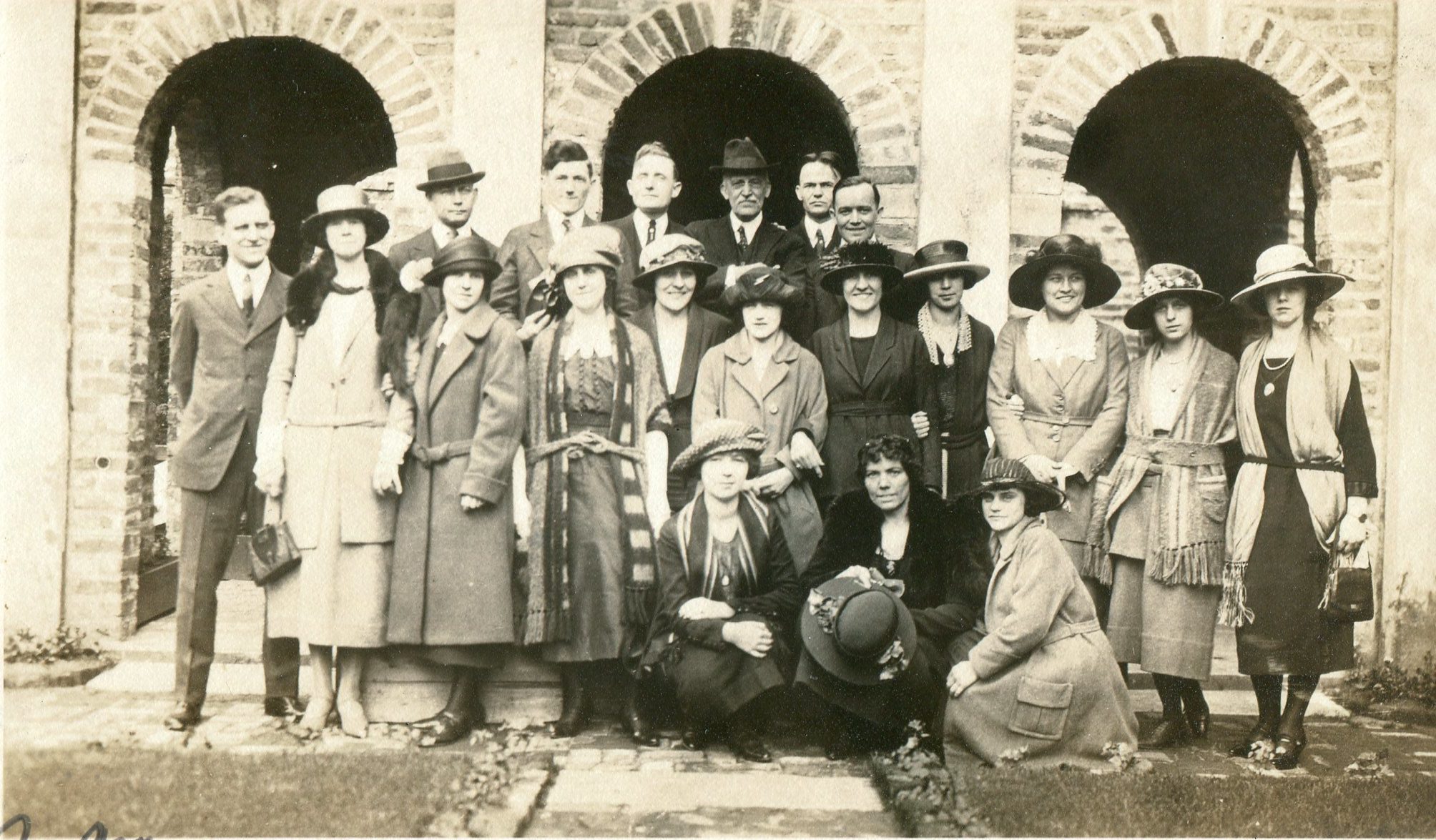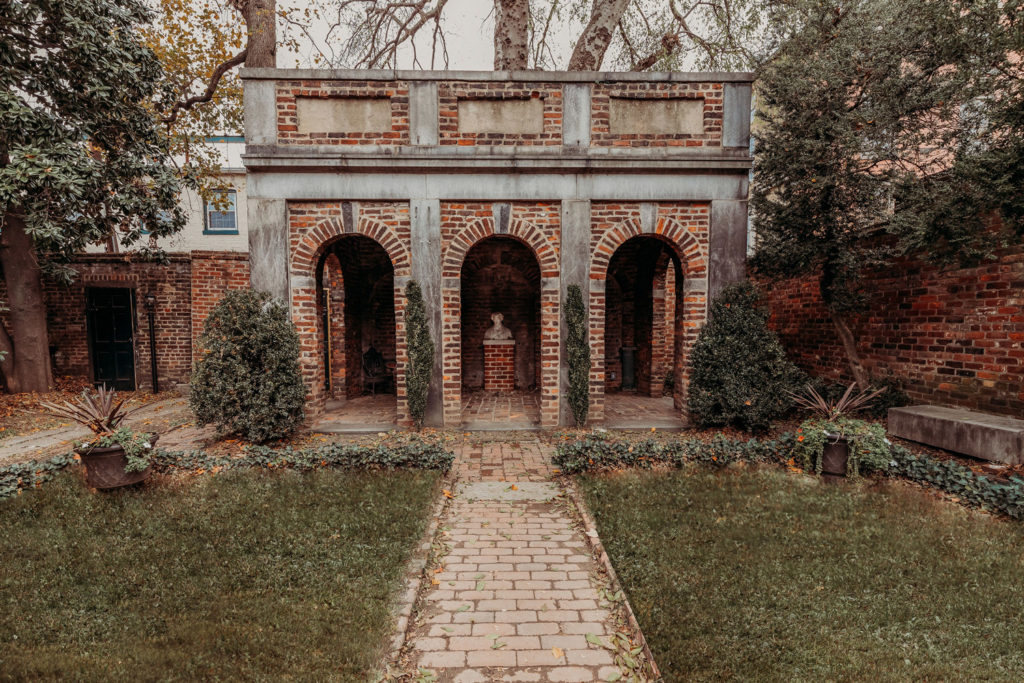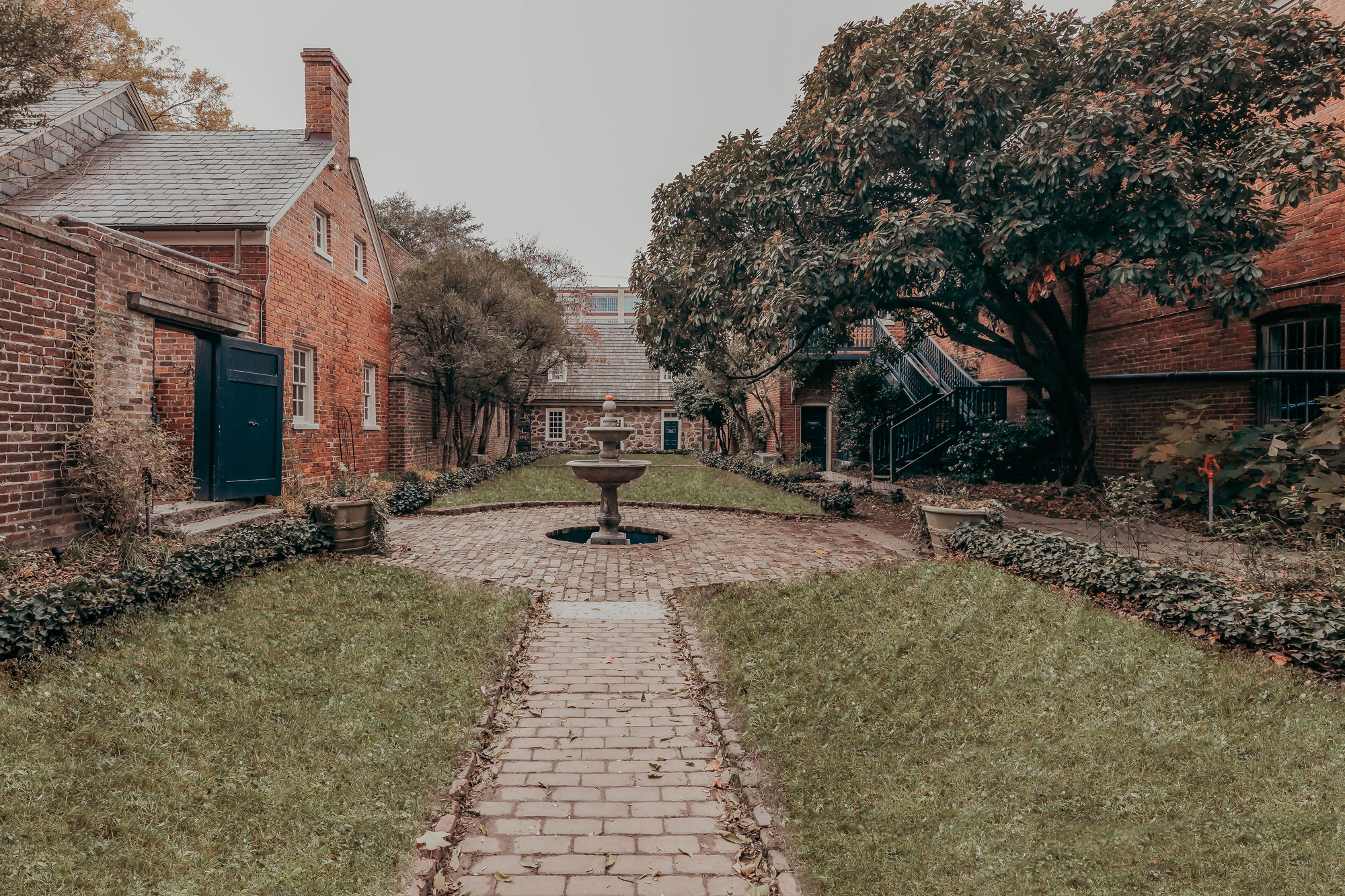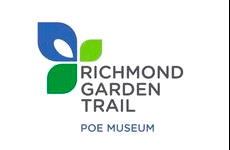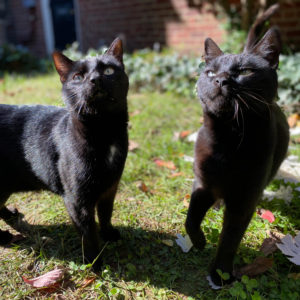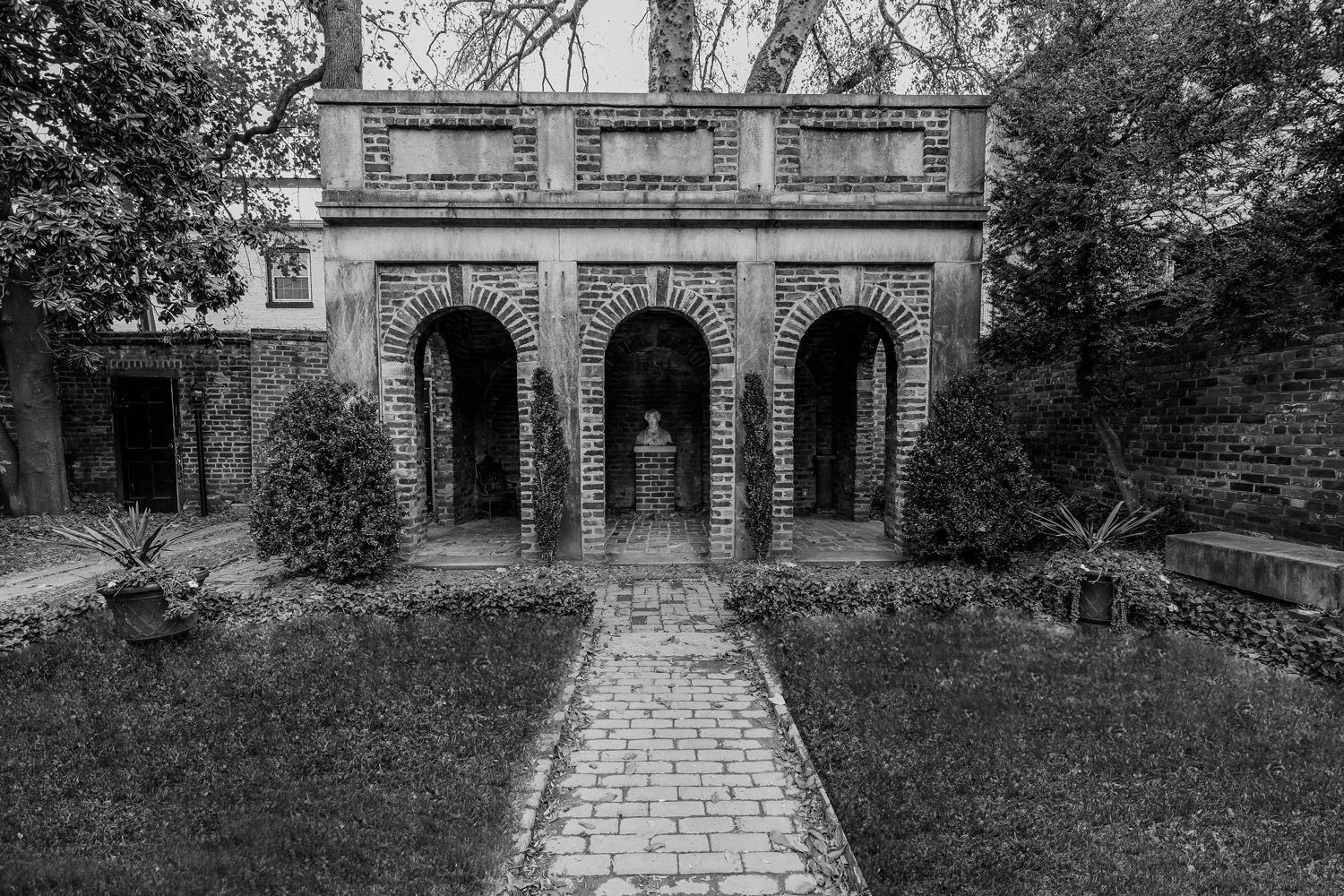
Our Mission:
Illuminating Poe for everyone, evermore.
The History
The Poe Museum began over a century ago when an Edgar Allan Poe collector and researcher named James Howard Whitty and a group of literary enthusiasts met in Poe’s hometown of Richmond, Virginia to create the state’s first monument to a writer.
Established in 1906 as the Poe Memorial Association, this organization failed to generate enough public support for the monument. Ten years later the members regrouped to save the Southern Literary Messenger building and create the National Poe Museum inside. The building was the birthplace of Poe’s career in journalism. The city’s building inspector decided to have the building demolished as part of a plan to widen Fifteenth Street (the city eventually widened Fourteenth Street instead.) Undeterred, Whitty salvaged the building materials to use elsewhere. He met historic preservationists Archer and Annie Jones who were renting Richmond’s famous Old Stone House. Mrs. Jones decided the empty lot behind the house would be a fitting location for a Poe memorial garden, and Whitty allowed her to use the bricks and granite from the Southern Literary Messenger building to pave the garden paths and to build a shrine to Poe.
The Old Stone House
The Old Stone House is the oldest residential building that is still standing in Richmond, Virginia. It currently houses an exhibit about Poe’s childhood in Richmond. Although Edgar Allan Poe never lived in the Old Stone House, he still had connections to the home itself and its surrounding neighborhood.
In 1824, a young Edgar Allan Poe was a part of a junior honor color guard that escorted the Revolutionary War General Marquis de Lafayette around Richmond. After escorting Lafayette around the neighborhood, Poe and the honor guard took the general to the Old Stone House, the residence of the Ege family which had helped supply Lafayette’s troops during the Revolution. Poe stood guard outside of the house. In the years to come, Poe would pass the house several times on his walks down Main Street to Rockett’s Landing.
Poe would have been aware of the Old Stone House’s significance since the house was already appearing in guidebooks as a Richmond landmark. An 1843 book already refers to the century-old house as “the old Stone House” and calls it the oldest house in Richmond. There is no evidence that Poe ever entered the home. In the last half of the nineteenth century, the house, then used as a curio shop, was called “Lafayette’s Headquarters” or “Washington’s Headquarters” even though neither had actually used it as their headquarters at any time. It was rumored that the curio shop had a live bear on display at one point in time.
A peculiar feature of the house is the insignia “IR” to the right of the east window on the south side of the house. One theory holds that the initials stand for “Jacobus Rex” meaning “King James” and that the house was built during the brief reign of James II from 1685 to 1688. Other theories suggest that the stone was either found among the ballast stones thrown ashore from ships coming to load up with tobacco at the Port of Manchester or that the stone was left by Christopher Newport when he first reached the Falls of the James in 1607 during the reign of James I.
The Poe Shrine
On April 26, 1922, the Poe Shrine opened to the public with a weekend of activities in the Enchanted Garden. A highlight of the event was a talk by Edward Virginius Valentine who had once met Poe seventy-three years earlier. The Shrine itself was built of bricks and building materials from the office of the Southern Literary Messenger where Poe was employed and which was located just a few blocks from the museum. Inside the Shrine sits a “pallid bust” of Poe greeting visitors from all over the world.
The Poe Shrine’s charter members included railroad magnate Henry Huntington, composer John Phillips Sousa, and several descendants of Edgar Allan Poe’s relatives and friends. Cultural figures from around the world flocked to the new memorial, which counted among its early visitors Gertrude Stein, H.P. Lovecraft, Henry Miller, and Salvador Dalí.
By the end of the decade, the museum had already outgrown its original building and expanded into three adjoining structures. The Elizabeth Arnold Poe Memorial Building was constructed using a staircase taken from one of Poe’s boyhood homes.
The Poe Memorial Association eventually reorganized as the Poe Foundation, which was tasked with operating the Poe Shrine. Among the Poe Foundation’s notable presidents was two-time Pulitzer Prize-winning historian Douglas Southall Freeman, who guided the institution through the lean years of the Great Depression and was responsible for changing the name of the Poe Shrine to the Poe Museum. The Poe Museum’s collection is the most comprehensive in the world and its influence reaches millions of scholars, students, teachers, and literary enthusiasts every year.
The Enchanted Garden
The Poe Museum opened to the public in 1922, featuring the Old Stone House and Enchanted Garden. The Museum’s Founders were inspired by Poe’s poem “To One in Paradise.”
Thou wast that all to me, love,
For which my soul did pine—
A green isle in the sea, love,
A fountain and a shrine,
All wreathed with fairy fruits and flowers,
And all the flowers were mine.
Along with the imagery from the first stanza of “To One in Paradise” there are many pieces of the garden with connections to Poe’s life. The stone benches sitting along the edges of the garden were taken from the Yarrington Boarding house, which was located near the Capitol along Bank Street (the site where Poe married his wife Virginia). The ivy that lines the green isle was taken from Edgar Allan Poe’s mother’s grave in St. John’s Church. Eliza Poe was not only Edgar’s mother, but also a renowned actress.
Visitors may also notice shards of broken glass atop the garden walls. This early version of a security device can be found in Poe’s short story “William Wilson.” Towering above the back of the garden is a Hackberry tree which was planted in the 1920’s.
The Enchanted Garden serves as the backdrop for a variety of events throughout the year including weddings, Unhappy Hours, the Birthday Bash, and other special events. The Enchanted Garden is also available to be rented for private events.
We would like to thank the following Sponsors and Partners:
Edgar and Pluto: The Poe Museum Cats!
Poe loved cats. His beloved tortoiseshell cat, Catterina, is said to have sat on Poe’s shoulder to watch him write and to have slept on his wife’s chest to keep her warm.
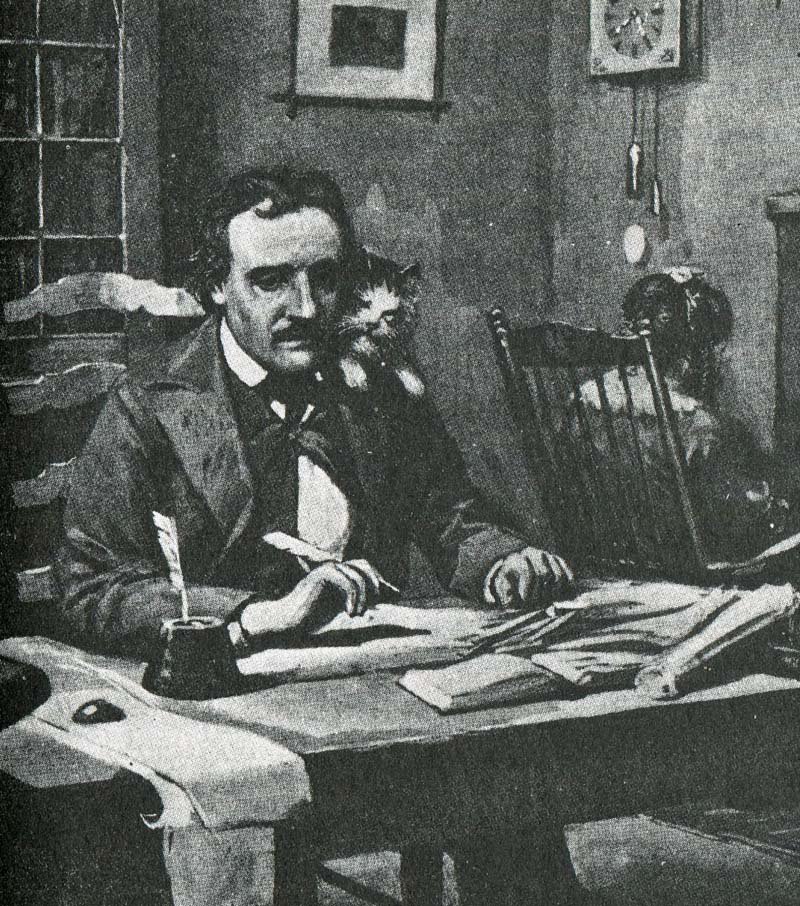
“The writer of this article is the owner of one of the most remarkable black cats in the world — and this is saying much.”
Edgar Allan Poe
In honor of Poe’s love of cats, the Poe Museum cares for two sagacious felines named Edgar and Pluto—the latter named after the cat in Poe’s story “The Black Cat.” In November 2012, the museum’s gardener found the tiny kittens in the Enchanted Garden, and the museum staff volunteered to care for them, seeing that they receive regular veterinary care, healthy food, and a warm room to call home. During business hours, Edgar and Pluto enjoy greeting the museum’s visitors in the gift shop and garden. We kindly ask that you please not bring them treats because they are on a diet.

